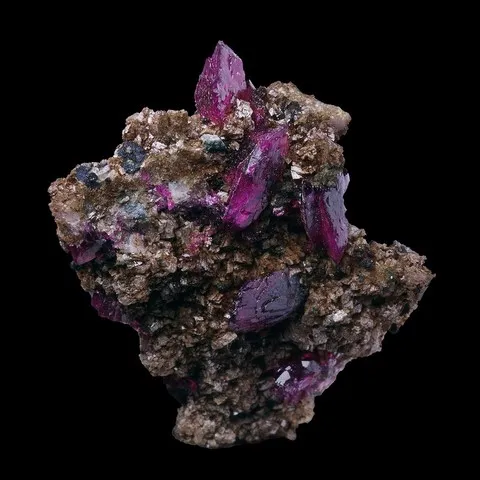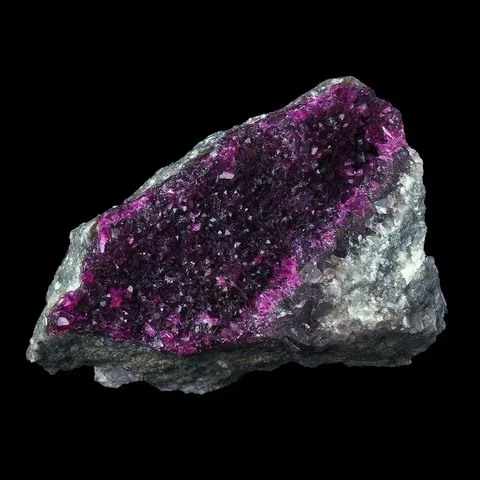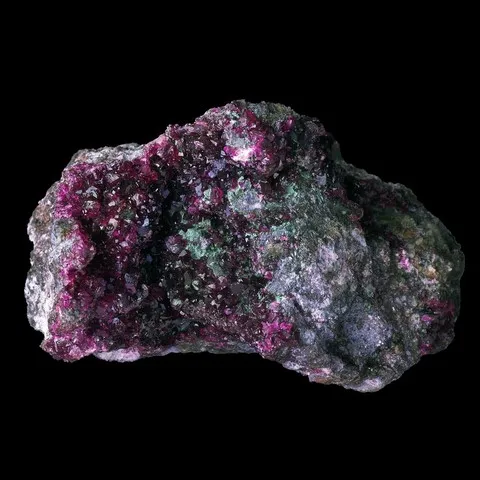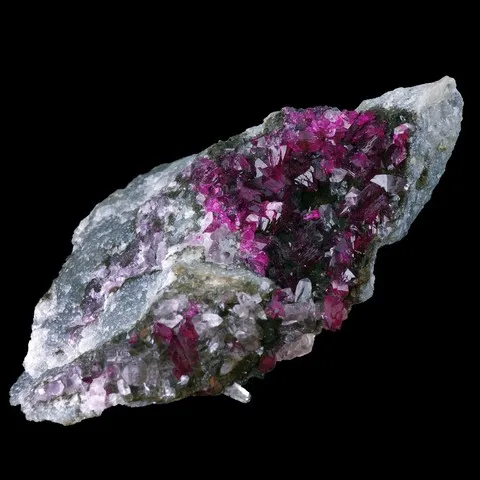ROSELITE
Class : Phosphates, arsenates, vanadates
Subclass : Hydrated arsenates
Crystal system : Monoclinic
Chemistry : Ca2(Co,Mg)(AsO4)2 2H2O
Rarity : Very rare
Roselite (sometimes called alpha-roselite to distinguish it from its triclinic dimorph, beta-roselite) is a rare cobalt arsenate from the oxidation zone of cobalt arsenide deposits. It owes its name to the mineralogist Gustave Rose of the University of Berlin. It occurs in small elongated prismatic crystals, pink to purple and purplish red, frequently grouped in spherolitic aggregates. It is a rare mineral coveted by collectors because of its attractive color.
Roselite in the World
Roselite in France
This mineral is not present in the French underground.
Twinning
Very common twin on {100}.
Fakes and treatments
No fake recorded for this mineral species.
Hardness : 3.5
Density : 3.46 to 3.74
Fracture : Undetermined
Trace : White to pink
TP : Translucent to transparent
RI : 1.694 to 1.735
Birefringence : 0.018
Optical character : Biaxial -
Pleochroism : Low
Fluorescence : None
Solubility : Acids
Magnetism : None
Radioactivity : None





